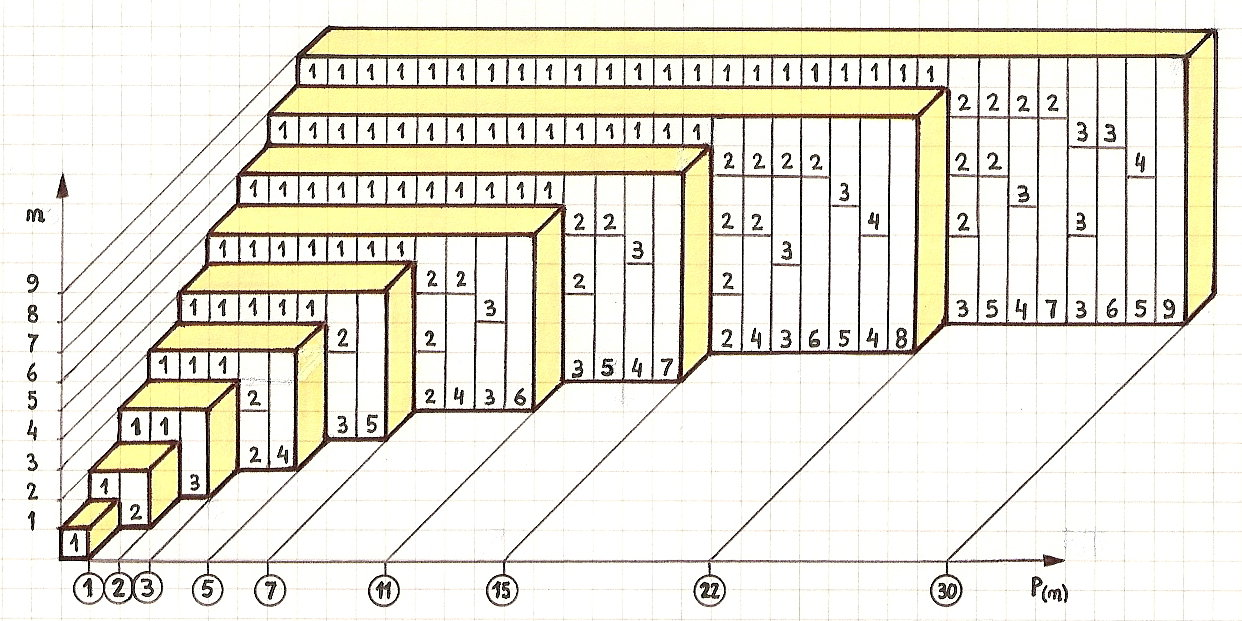Basic Information of Integer Partition Algorithm
suggest changeThe partition of an integer is a way of writing it as a sum of positive integers. For example, the partitions of the number 5 are:
- 5
- 4 + 1
- 3 + 2
- 2 + 2 + 1
- 2 + 1 + 1 + 1
- 1 + 1 + 1 + 1 + 1
Notice that changing the order of the summands will not create a different partition.
The partition function is inherently recursive in nature since the results of smaller numbers appear as components in the result of a larger number. Let p(n,m) be the number of partitions of n using only positive integers that are less than or equal to m. It may be seen that p(n) = p(n,n), and also p(n,m) = p(n,n) = p(n) for m > n.

Example of Integer Partition Algorithm:

Auxiliary Space: O(n^2)
Time Complexity: O(n(logn))
Found a mistake? Have a question or improvement idea?
Let me know.
Table Of Contents